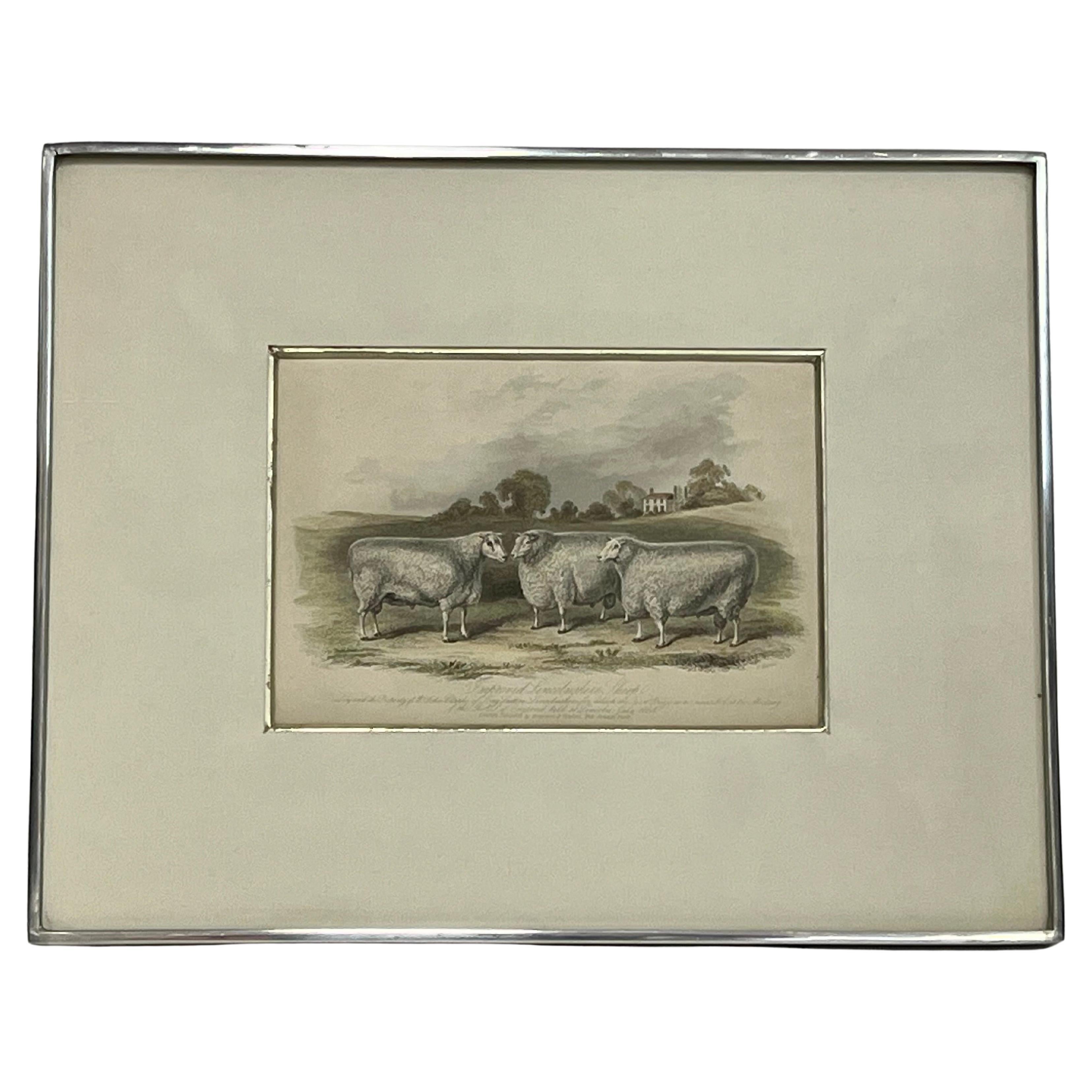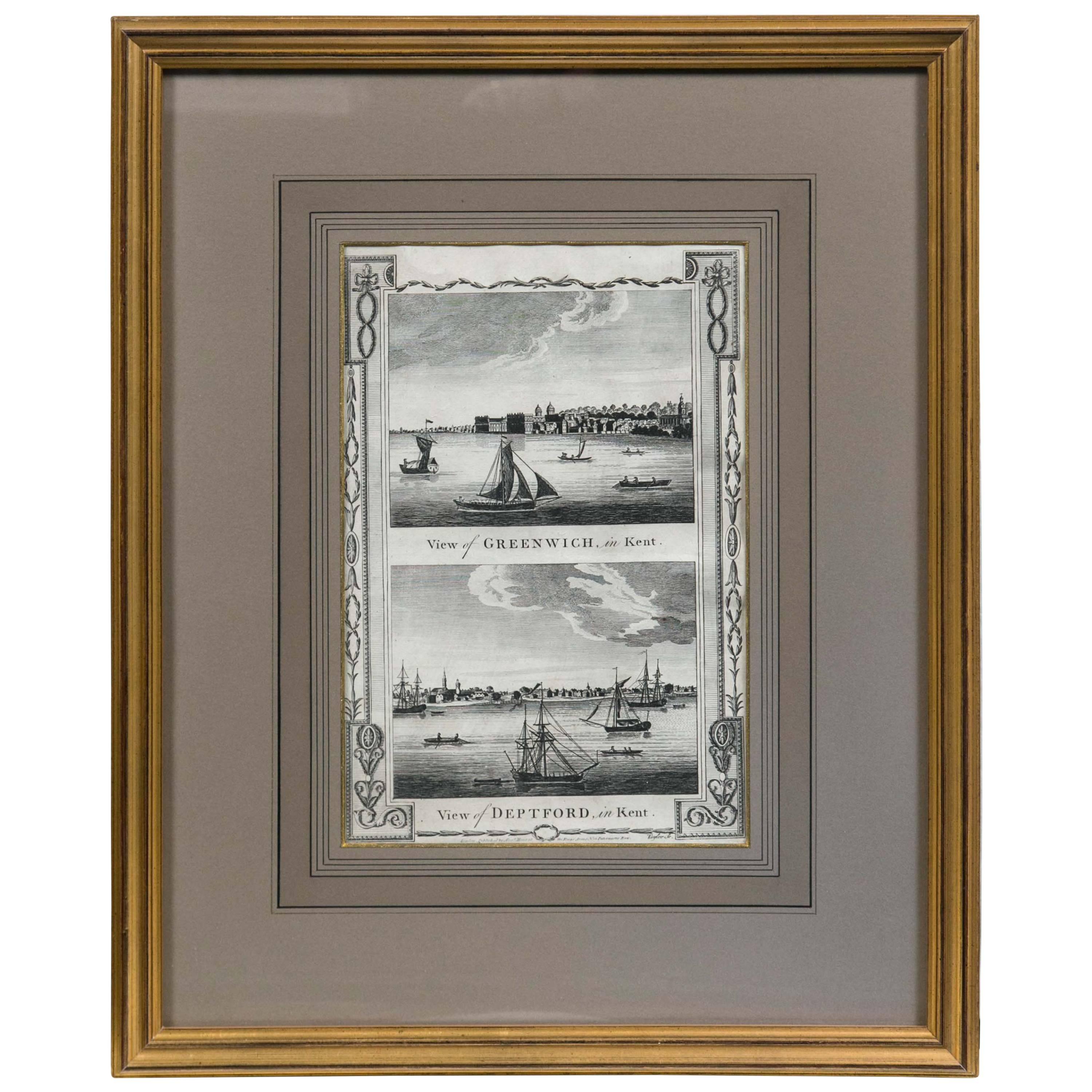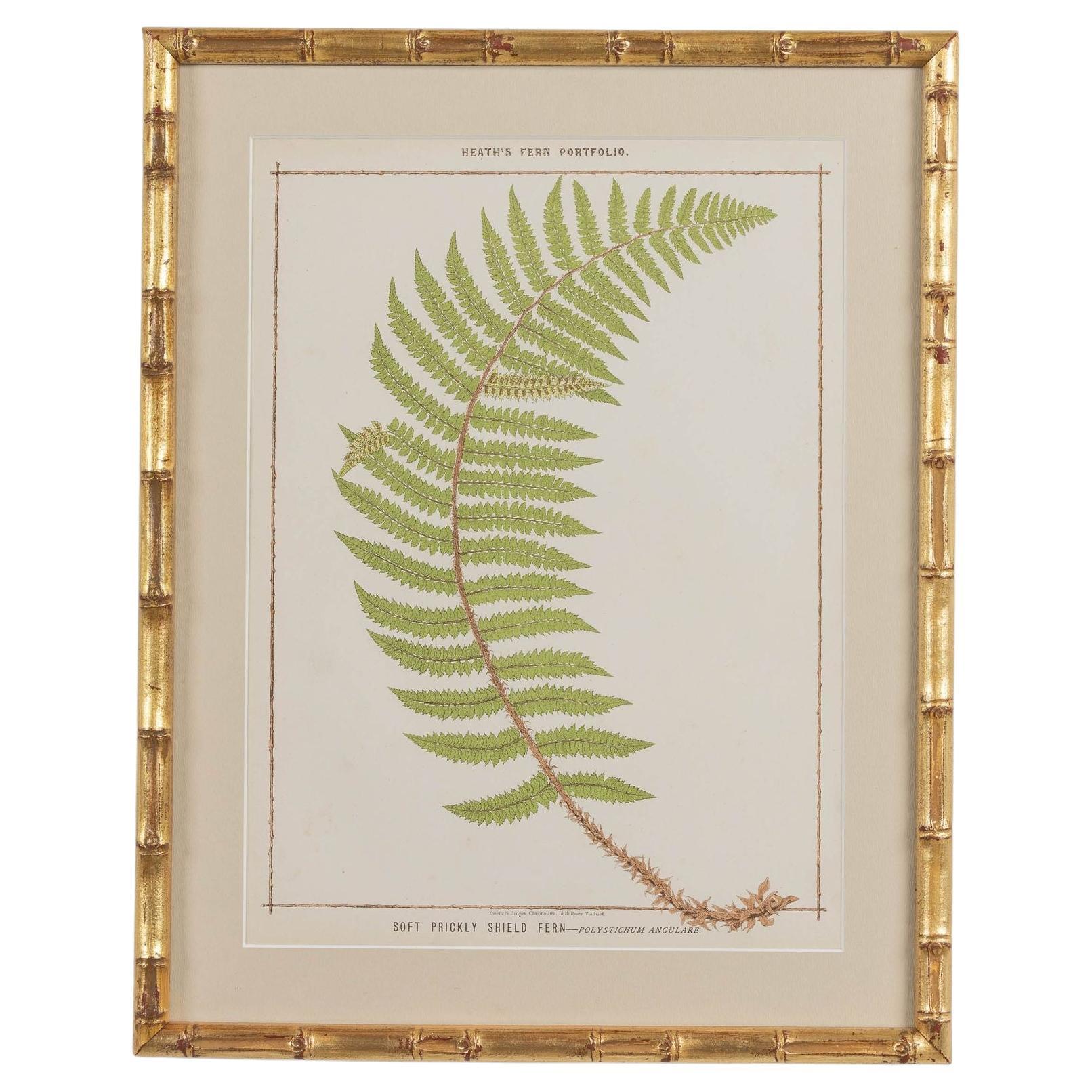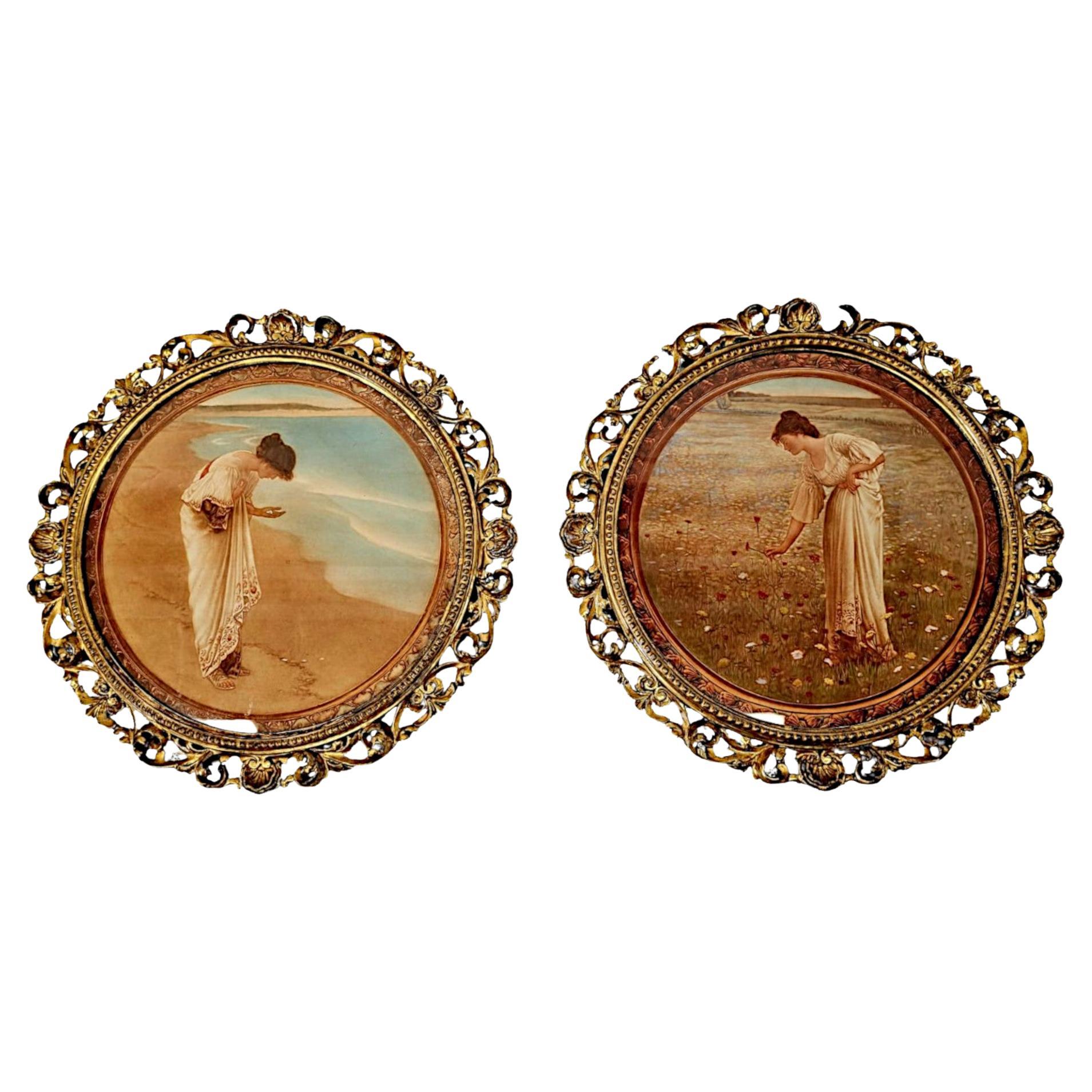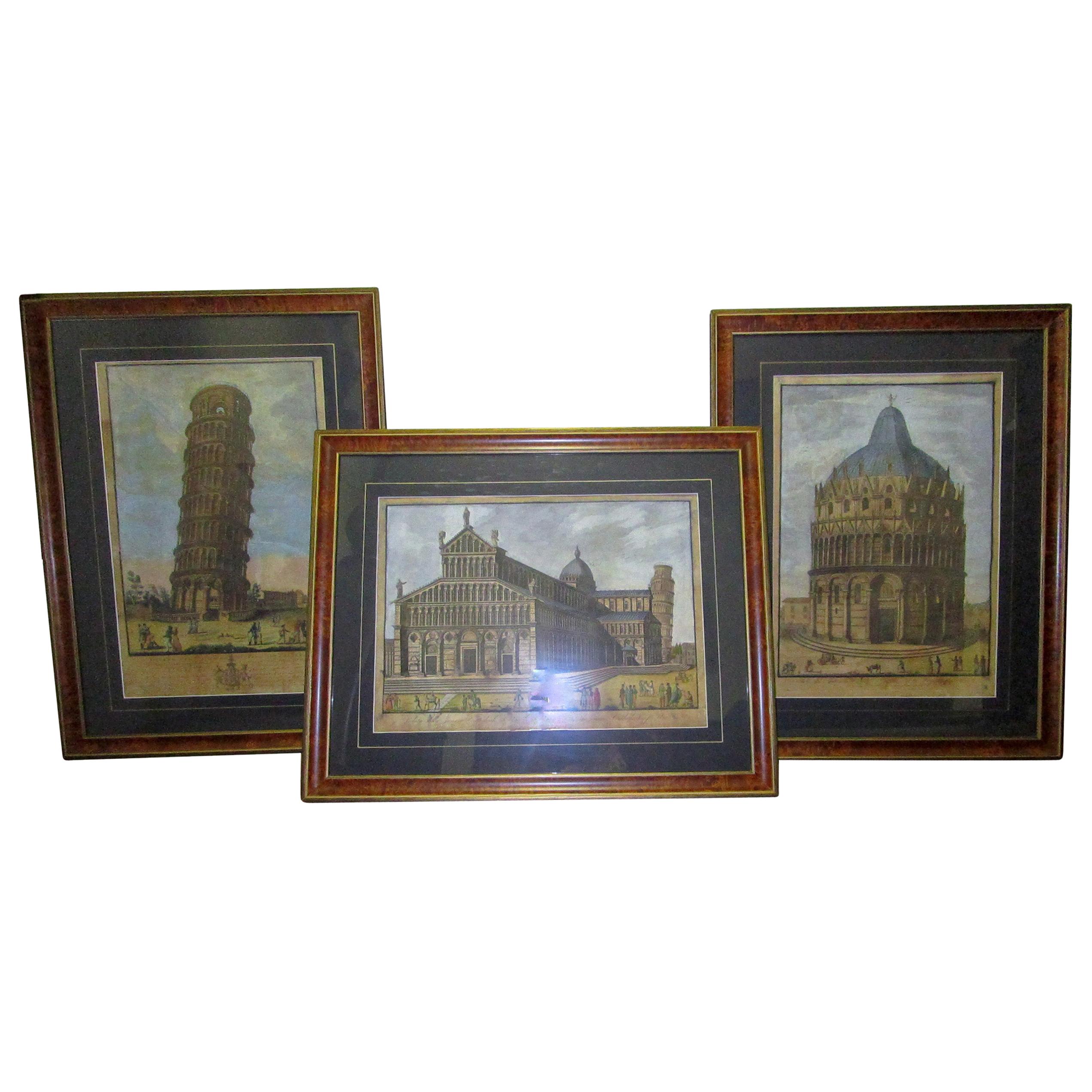Items Similar to 19th C English Print by H. Strafford of Three South Down Wethers Kulicke Frame
Want more images or videos?
Request additional images or videos from the seller
1 of 8
19th C English Print by H. Strafford of Three South Down Wethers Kulicke Frame
About the Item
This is where the antique mixes with the modern. Where worlds collide and give rise to something fresh, new and unique. A mid 19th century British print by Henry Strafford presented in a Kulicke frame which had it's origins in the mid 20th Century in America. This print of Three South Down Wethers printed by Joseph Rogerson speaks to the care, breeding and fascination with sheep. The presentation in a Kulicke frame speaks to the modern aesthetic. With a gilt fillet and gorgeous textile mat, this work of art is ready to be displayed on its own or in a group. P.S. I have seven other listings of amazing sheep prints in Kulicke frames - gallery wall, anyone? You may be wondering where I acquired so many mid to late 19th Century English sheep prints in exquisite Kulicke frames? Well, as any antique dealer worth their salt will tell you, sources must remain confidential. Okay, you ask, but tell us who's this Kulicke character? If you have the time and the desire, I hope you'll read this short biography of Robert Kulicke from the Acanthus Reed website, "In 1947 a young man, home from the war studying art and advertising design, took his first steps at making picture frames. His early endeavors were well received and it encouraged him to peruse a career as a frame maker. Later Robert Kulicke would admit at the time he had no idea of the extent of his ignorance, "being reasonably intelligent, persuasive, enthusiastic and totally ignorant at once." That enthusiasm led him to take advantage of the GI bill and travel to Paris to study his craft. He was lucky enough to study painting with Fernand Leger in the morning and apprentice with frame carvers and gilders in the afternoon. By his second year there he was spending more and more time at the Louvre teaching himself the history of frames. When he returned to New York he continued to study frames and their relationship to architectural design at the 42nd Street Library. By 1951 Robert Kulicke the frame maker was open for business. He began developing narrow wood frames with gilded surfaces using strainer supports to reinforce them. In 1953 he developed the floater frame for Knoll Associates; it was not a new idea, but his good design sense made it better looking and more user friendly. He had the unique ability to keep things simple; he once said: "to aim at originality head on is the only certain way of never arriving there - true originality is a byproduct of the search for a technical aesthetic solution to a technical and aesthetic problem" The world of modern art he was living in had many technical and aesthetic problems to be solved and he jumped right in. In the late fifties he created the welded aluminum frame for the Museum of Modern Art, a polished metal frame elegant and strong enough for the new powerful works of art. It was aesthetically based on the Barcelona chair by Mies Van de Rohe, a masterpiece of 20th century design. Indeed, the aluminum frame was a game-changer in the industry, suddenly thin was in. He then developed the plexibox for the photography department at MOMA; a solution to the technical problem of making a frameless frame that is dust proof. Meanwhile, he was putting all that knowledge he had acquired on the history of frames to good use by mastering the art of making period reproduction frames. His attention to authenticity led many of his frames to hang in the finest museums in the country including the National Gallery of Art and the Metropolitan Museum. Kulicke's generosity with his skills and knowledge would reach well into the future as he passed them on to many of today's leading gilders and frame makers. In 1967 he revolutionized the frame industry with the metal section frame, an idea he had been working on since he first brazed extruded aluminum to make his classic frame. The corner joint design made picture frames affordable just as baby boomers were starting to collect prints and posters. There are few homes today that do not have some variation on the metal section frame. For all he accomplished as a frame maker it was not his only passion. The New York Times got it right; in a 2007 obituary it called him "a painter, goldsmith, teacher, businessman and designer who changed the look of postwar art by modernizing frame design". The pride we feel today as framemakers has a great deal to do with the legacy he left behind. For me Robert Kulicke will always be the framer's framer." And with that I will leave you with a little bit about me. I started in this crazy business over twenty years ago in New York City. And what did I start buying and selling? Picture frames. And lots of them. So I hope you'll love this work of art for the art itself and for the framing. There's a lot of history in this little package!
- Creator:Robert Kulicke (Designer)
- Dimensions:Height: 11 in (27.94 cm)Width: 14 in (35.56 cm)Depth: 1 in (2.54 cm)
- Materials and Techniques:
- Place of Origin:
- Period:
- Date of Manufacture:1860's
- Condition:Wear consistent with age and use. In good condition with age appropriate wear.
- Seller Location:Atlanta, GA
- Reference Number:1stDibs: LU7240234850742
About the Seller
5.0
Vetted Seller
These experienced sellers undergo a comprehensive evaluation by our team of in-house experts.
Established in 2002
1stDibs seller since 2022
60 sales on 1stDibs
Typical response time: <1 hour
- ShippingRetrieving quote...Ships From: Atlanta, GA
- Return PolicyThis item cannot be returned.
More From This SellerView All
- 19th Century British Print of Improved Lincolnshire Sheep in Kulicke FrameBy Robert KulickeLocated in Atlanta, GAThis is where the antique mixes with the modern. Where worlds collide and give rise to something fresh, new and unique. A mid 19th Century British print presented in a Kulicke frame which had it's origins in the mid 20th Century in America. This print of Improved Lincolnshire Sheep printed...Category
Antique Mid-19th Century English Prints
MaterialsMetal
- 19th Century English Tinsel Print Portrait of Actor Retailed Saxon and ClemensLocated in Atlanta, GAA mid 19th century English full length portrait tinsel print hand colored and hand embellished, framed and retailed by Saxon and Clemens of New York City circa mid 20th century. This print depicts, "Mr. Freer as Marmion". This is one of three tinsel prints that I have available on my HKFA storefront here on 1stdibs. From the Robertson Davies Collection website, I would like to share with you this fascinating history of tinsel prints, "As the popularity of these prints became wide spread, bags of prepared tinsel decorations were sold along with the prints making them customizable by the purchaser. Thus after the tinseling process, no two prints would be identical. Tinsel prints emerged from the tradition of toy theatres. Once an appropriate model theatre was purchased, the public could buy prints depicting actors, actresses and scenery from plays that were being performed at the time and recreate those plays in their home. As the "juvenile drama" became popular, play books were published along side prints so the words of the plays could be recreated as well. While the genre flourished the desire to purchase a larger print of a specific actor or actress remained. Thus two types of theatrical prints became to be printed: those for juvenile dramas that were small and excluded specific actors names, and actors portraits that were larger and more individualized. In the larger theatrical portraits, characters were "always displayed full length" and "striking [a] habitual and dramatic pose". The 1830's marked the emergence of tinseling prints as a past time. Before this time, if an individual wished to embellish a portrait, individual sheets of metal foil would have to be purchased, measured and cut to fit an individual print. Once tinseling became common, different packages of precut tinsel (specific to the print)would be sold with each print as aforementioned. The term tinsel specifically refers to the metal sheets used to represent armor and weapons, but more broadly includes pieces of satin, silk, velvet, leather, and feathers among other embellishments. Although tinsel prints are now viewed as works of art, in the nineteenth century they were no more than a child's pastime. Most sources cite tinseling, as well as toy theatre, as being most popular among boys from the working class. Their popularity among boys could explain why male portraits were produced more frequently than female, however, it is more likely that male costumes, with their multiple pieces of armor and arms...Category
Antique Mid-19th Century English Prints
MaterialsMetal, Brass, Foil
- 19th Century English Tinsel Print Portrait of Actor Retailed Saxon and ClemensLocated in Atlanta, GAA mid 19th century English full length portrait tinsel print hand colored and hand embellished, framed and retailed by Saxon and Clemens of New York City (original paper backing has been lost to time, however this print is similar to two others both from Saxon and Clemens) circa mid 20th century. This print depicts, "Mr. Collins as Sir Reginold the Bold in the Giant of Palestine". This is one of three tinsel prints that I have available on my HKFA storefront here on 1stdibs. From the Robertson Davies Collection website, I would like to share with you this fascinating history of tinsel prints, "As the popularity of these prints became wide spread, bags of prepared tinsel decorations were sold along with the prints making them customizable by the purchaser. Thus after the tinseling process, no two prints would be identical. Tinsel prints emerged from the tradition of toy theatres. Once an appropriate model theatre was purchased, the public could buy prints depicting actors, actresses and scenery from plays that were being performed at the time and recreate those plays in their home. As the "juvenile drama" became popular, play books were published along side prints so the words of the plays could be recreated as well. While the genre flourished the desire to purchase a larger print of a specific actor or actress remained. Thus two types of theatrical prints became to be printed: those for juvenile dramas that were small and excluded specific actors names, and actors portraits that were larger and more individualized. In the larger theatrical portraits, characters were "always displayed full length" and "striking [a] habitual and dramatic pose". The 1830's marked the emergence of tinseling prints as a past time. Before this time, if an individual wished to embellish a portrait, individual sheets of metal foil would have to be purchased, measured and cut to fit an individual print. Once tinseling became common, different packages of precut tinsel (specific to the print)would be sold with each print as aforementioned. The term tinsel specifically refers to the metal sheets used to represent armor and weapons, but more broadly includes pieces of satin, silk, velvet, leather, and feathers among other embellishments. Although tinsel prints are now viewed as works of art, in the nineteenth century they were no more than a child's pastime. Most sources cite tinseling, as well as toy theatre, as being most popular among boys from the working class. Their popularity among boys could explain why male portraits were produced more frequently than female, however, it is more likely that male costumes, with their multiple pieces of armor and arms...Category
Antique Mid-19th Century English Prints
MaterialsFoil, Brass, Metal
- 19th Century English Tinsel Print Portrait of Actor Retailed Saxon and ClemensLocated in Atlanta, GAA mid 19th century English full length portrait tinsel print hand colored and hand embellished, framed and retailed by Saxon and Clemens of New York City circa mid 20th century. This print depicts, "Mr. Freer as Alonzo the Patriot". This is one of three tinsel prints that I have available on my HKFA storefront here on 1stdibs. From the Robertson Davies Collection website, I would like to share with you this fascinating history of tinsel prints, "As the popularity of these prints became wide spread, bags of prepared tinsel decorations were sold along with the prints making them customizable by the purchaser. Thus after the tinseling process, no two prints would be identical. Tinsel prints emerged from the tradition of toy theatres. Once an appropriate model theatre was purchased, the public could buy prints depicting actors, actresses and scenery from plays that were being performed at the time and recreate those plays in their home. As the "juvenile drama" became popular, play books were published along side prints so the words of the plays could be recreated as well. While the genre flourished the desire to purchase a larger print of a specific actor or actress remained. Thus two types of theatrical prints became to be printed: those for juvenile dramas that were small and excluded specific actors names, and actors portraits that were larger and more individualized. In the larger theatrical portraits, characters were "always displayed full length" and "striking [a] habitual and dramatic pose". The 1830's marked the emergence of tinseling prints as a past time. Before this time, if an individual wished to embellish a portrait, individual sheets of metal foil would have to be purchased, measured and cut to fit an individual print. Once tinseling became common, different packages of precut tinsel (specific to the print)would be sold with each print as aforementioned. The term tinsel specifically refers to the metal sheets used to represent armor and weapons, but more broadly includes pieces of satin, silk, velvet, leather, and feathers among other embellishments. Although tinsel prints are now viewed as works of art, in the nineteenth century they were no more than a child's pastime. Most sources cite tinseling, as well as toy theatre, as being most popular among boys from the working class. Their popularity among boys could explain why male portraits were produced more frequently than female, however, it is more likely that male costumes, with their multiple pieces of armor and arms...Category
Antique Mid-19th Century English Prints
MaterialsBrass, Foil
- Monumental French Color Print by Henri Riviere Late 19th or Early 20th CenturyLocated in Atlanta, GAA late 19th or early 20th Century monumental color print by French artist Henri Riviere (1864 - 1951). The print shows a man and his horse in the French countryside, haystacks visibl...Category
Early 20th Century French Prints
MaterialsPlexiglass, Wood, Paper
- Monumental French Color Print by Henri Riviere Late 19th or Early 20th CenturyLocated in Atlanta, GAA late 19th or early 20th Century monumental color print by French artist Henri Riviere (1864 - 1951). The print shows a figure under an umbrella walking in a landscape with building...Category
Early 20th Century French Prints
MaterialsWood, Paper, Plexiglass
You May Also Like
- Framed Print, English Harbor Views, Early 19th CenturyLocated in Chappaqua, NYFramed print of English Harbor views, early 19th century, "View of Greenwich in Kent and View of Deptford in Kent." Custom frame and mat.Category
Antique Early 19th Century English Prints
MaterialsPaper
- 19th c. Framed English Chromolithograph FernLocated in Wichita, KSA beautiful collection of four chromolithographs from the 19th c. by Francis George Heath. Archival quality framing with archival matte front and back, protecting the original, antiq...Category
Antique 19th Century English Prints
MaterialsGlass, Wood, Paper
- Pair of 19th Century Neoclassic Framed PrintsLocated in Palm Springs, CAPair of 19th century neoclassic steel engraving prints. Professionally matted and framed.Category
Antique 19th Century Prints
MaterialsWood, Paper
- A Gorgeous Pair of 19th Century Giltwood Framed PrintsLocated in Dublin, IEA gorgeous pair of 19th Century giltwood framed prints of circular form, set within a pair of finely hand carved pierced and moulded giltwood frames with stunning scrolling foliate, ...Category
Antique 19th Century English Prints
MaterialsGlass, Giltwood
- 19th Century Framed Italian Prints of Pisa by Engraver Antonio VericoBy Raffaello MorghenLocated in Savannah, GAThree detailed colored prints by Antonio Verico. Born in 1775, he was a master of chalcography, the art of engraving on copper plates. He worked in Rome and Florence, carving on drawings by various authors, with a technique close to that of Raffaello Morghen...Category
Antique Early 19th Century Italian Classical Roman Prints
MaterialsWalnut, Paper, Glass
- Framed Japanese 19th Century Meiji Woodblock Print By Toyohana ChikanobuLocated in London, GBFramed Japanese 19th Century Meiji Woodblock Print By Toyohana Chikanobu Original Woodcut by Chikanobu Toyoharu.(1838 - 1912) Published in 1884 ...Category
Antique 19th Century Japanese Prints
MaterialsPaper
